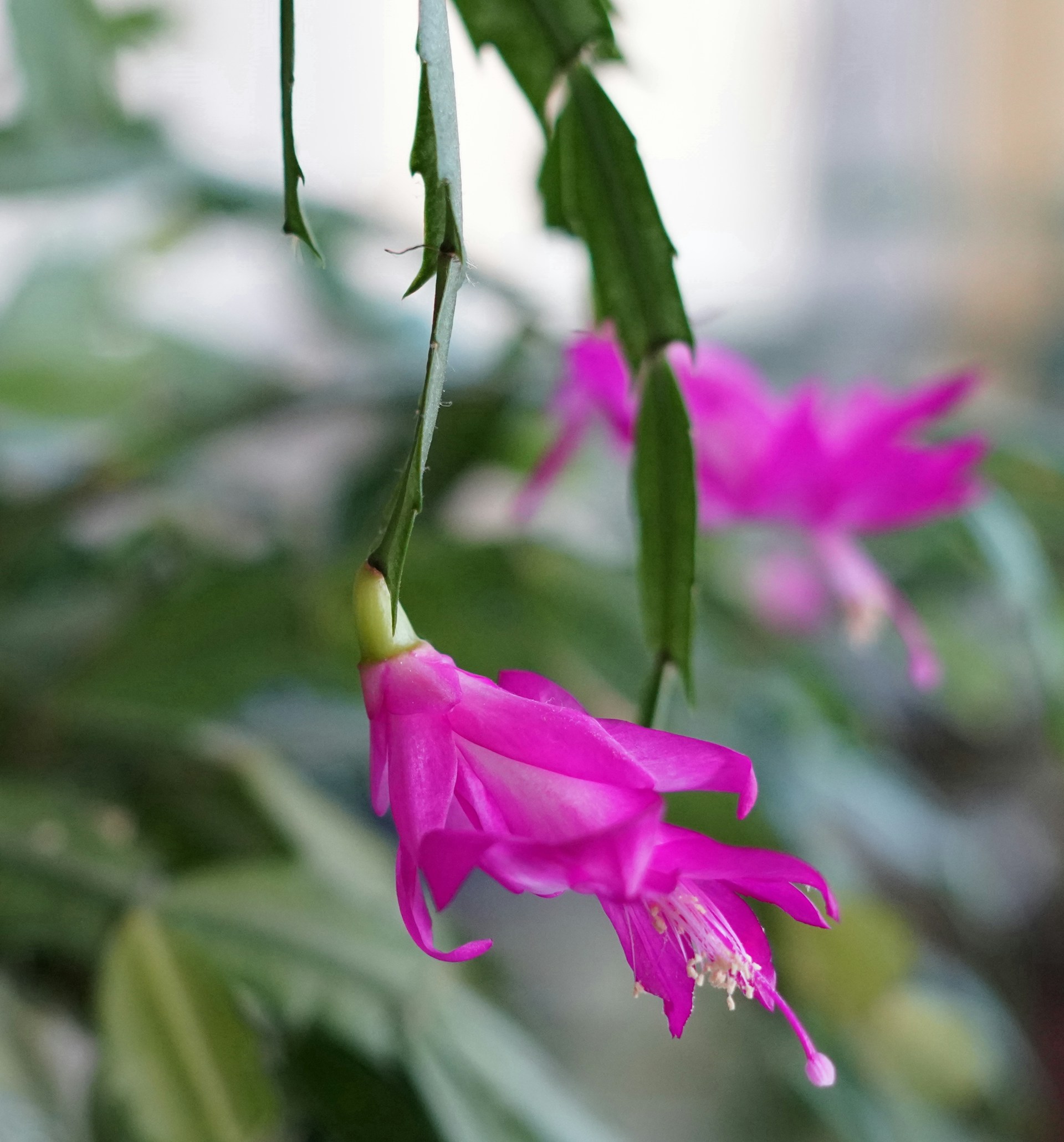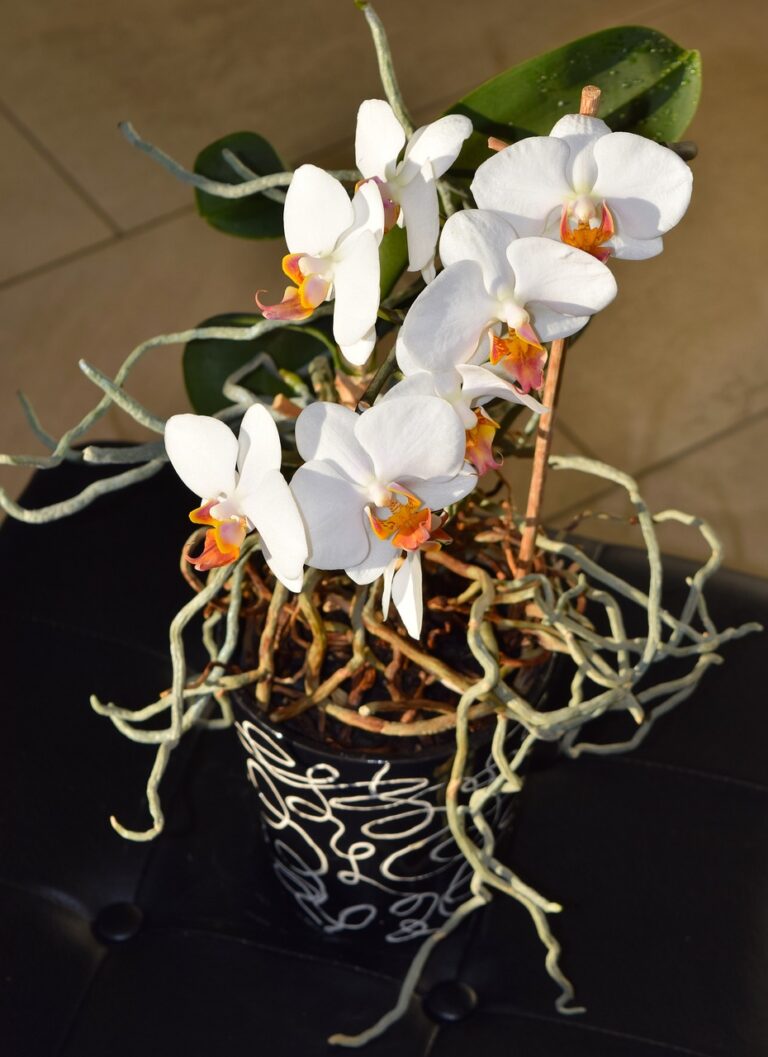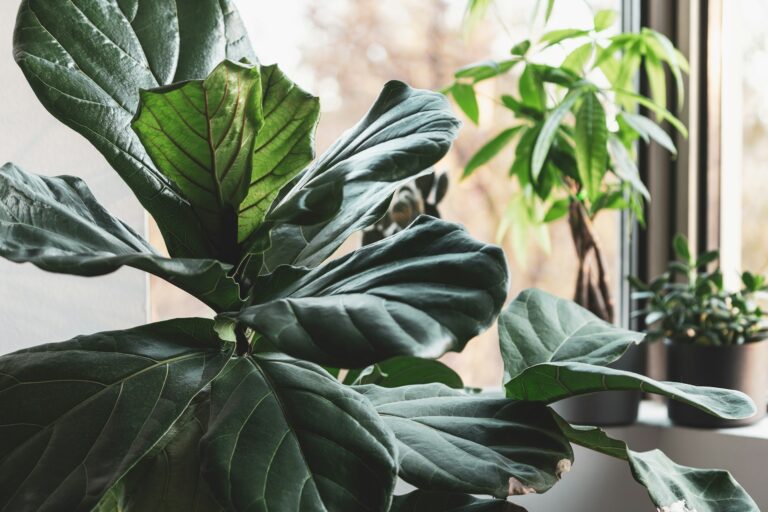The Christmas cactus is a beloved houseplant, known for its stunning, festive blooms that brighten homes during the holiday season. Unlike typical cacti, this tropical plant thrives in cooler, more humid conditions, making its care a bit different from what you might expect.
In this guide, we’ll explore how to care for your Christmas cactus, covering everything from watering and lighting to temperature and soil. With the right care, your Christmas cactus will reward you with vibrant blooms that are sure to add a touch of holiday magic to your home.
Watering Your Potted Christmas Cactus
When caring for Christmas cactus in a pot, proper watering is the foundation of good health. This isn’t just about quenching the plant’s thirst; it’s about striking the perfect balance that mimics its natural environment.
Unlike their desert-dwelling relatives, Christmas cacti hail from the rainforests of Brazil, where they grow in the shady, humid understory. Understanding this background can help you cater to their unique needs.
Importance of Proper Watering
Watering is a critical aspect of Christmas cactus care, as these plants prefer a delicate balance of moisture. Too little water, and your cactus will become dehydrated, leading to shriveled leaves and stunted growth. Too much, and the plant may suffer from root rot, a condition that is often fatal.
The key is to water your potted Christmas cactus thoroughly, ensuring that the water reaches all parts of the soil while allowing any excess to drain away. This simulates the plant’s natural rainforest conditions, where it would receive a steady supply of moisture without becoming waterlogged.
Signs of Over and Under-Watering
Over-watering often manifests as yellowing, limp leaves, which may eventually drop off if the condition persists. On the other hand, under-watered Christmas cacti tend to have dry, shriveled leaves that look lifeless.
Adjusting your watering routine based on these symptoms is crucial for the long-term health of your plant. If you notice signs of over-watering, reduce the frequency and ensure the soil has time to dry out between waterings. Conversely, if the plant appears under-watered, gradually increase the amount of water while ensuring good drainage.
Ideal Watering Schedule and Techniques
The best watering schedule for a potted Christmas cactus involves watering when the top inch of soil feels dry to the touch. This typically means watering every 2-3 weeks during the plant’s dormancy period (fall and winter) and once a week during the active growing season (spring and summer).
When watering, use room temperature water to avoid shocking the roots. Slowly pour water over the soil until it begins to drain from the bottom of the pot. Allow the excess water to drain completely before returning the plant to its spot. This method ensures that the roots receive enough moisture without sitting in water, which could lead to rot.
Lighting Requirements for Potted Christmas Cactus
Understanding how to provide the right amount of light is essential for successful Christmas cactus care, especially when the plant is kept indoors in a pot.
Best Light Conditions for Blooming
To encourage blooming, place your potted Christmas cactus in a location where it receives bright, indirect light. Ideally, an east-facing window is perfect because it provides soft morning sunlight, which is less intense than afternoon sun. Direct sunlight can scorch the leaves, so it’s important to provide filtered light that mimics the dappled sunlight of a rainforest canopy.
For optimal Christmas cactus care, ensure that your plant receives at least 8-10 hours of light per day during the growing season. This consistent light exposure encourages the production of flowers, leading to the vibrant blooms that make this plant a holiday favorite.
Adapting to Low Light Environments
One of the great things about potted Christmas cactus is its adaptability to various light conditions. If you don’t have access to bright, indirect light, your Christmas cactus can still thrive in lower light environments. However, be aware that this may result in slower growth and fewer blooms.
In low light conditions, rotate your plant occasionally to ensure even light distribution. This will help maintain a balanced shape and prevent one side from becoming leggy or elongated as it stretches toward the light source.
Using Grow Lights to Supplement Natural Light
During the winter months, when natural daylight is limited, you might consider using grow lights to supplement the light your Christmas cactus receives. LED grow lights are an excellent choice, as they provide the full spectrum of light needed for healthy growth without generating excessive heat.
Position the grow lights about 12 inches above the plant, and set them on a timer for about 10-12 hours per day. This additional light will help maintain your plant’s vibrant green color and support the blooming process, even during the darkest days of winter.
Temperature and Humidity for Potted Christmas Cactus
Temperature and humidity are critical factors in Christmas cactus care, especially for plants kept in pots indoors. These conditions must be carefully managed to mimic the plant’s natural habitat and encourage healthy growth and blooming.
Ideal Temperature Range
Christmas cacti thrive in moderate temperatures. During the day, aim to keep the temperature between 60-70°F (15-21°C), which is similar to their natural environment. At night, slightly cooler temperatures, around 50-60°F (10-15°C), are beneficial as they help to initiate the blooming process.
Sudden temperature changes can be stressful for your Christmas cactus, potentially leading to bud drop or other growth issues. To avoid this, place your potted Christmas cactus in a location where temperatures remain relatively consistent.
Handling Temperature Fluctuations
While Christmas cacti are somewhat resilient, they are sensitive to extreme temperature fluctuations. Avoid placing your plant near drafts, heating vents, or cold windows where it might experience sudden changes in temperature. Even brief exposure to freezing temperatures can cause damage, so be sure to protect your cactus from cold drafts in the winter.
If you live in a region with fluctuating indoor temperatures, consider placing your plant in a more stable environment, such as a well-insulated room away from exterior doors or windows. This will help ensure that your Christmas cactus remains healthy and vibrant.
Maintaining Optimal Humidity Levels
High humidity is another crucial aspect of Christmas cactus care. These plants thrive in environments with humidity levels of 50-60%, which is typical of their rainforest origins. If your indoor air is dry, especially during the winter heating season, you may need to take extra steps to increase humidity around your potted Christmas cactus.
One simple way to boost humidity is to place a tray filled with water and pebbles under the pot. As the water evaporates, it will create a more humid microenvironment around the plant. Alternatively, you can use a room humidifier to maintain consistent humidity levels. Misting the plant with water can also provide a quick humidity boost, but be careful not to overdo it, as excess moisture on the leaves can lead to fungal issues.
Soil and Potting for Christmas Cactus in Pots
Unlike some other cacti, Christmas cacti require a well-draining, slightly acidic soil mix that retains enough moisture to keep the roots hydrated without becoming waterlogged.
Choosing the Right Potting Mix
A well-draining potting mix is vital for Christmas cactus care. The best option is a commercial cactus or succulent mix, which is designed to provide the perfect balance of moisture retention and drainage. To further enhance the soil, you can mix in some peat moss or compost, which will help retain moisture while still allowing excess water to drain away.
If you prefer to make your own potting mix, combine equal parts of regular potting soil, coarse sand, and perlite. This blend will provide the ideal conditions for your potted Christmas cactus, ensuring that the roots have plenty of air circulation while retaining just the right amount of moisture.
Ensuring Proper Drainage
Drainage is critical to prevent root rot, a common issue in potted Christmas cacti. Choose a pot with drainage holes at the bottom to allow excess water to escape. If your chosen pot doesn’t have drainage holes, be sure to add a layer of gravel or small stones at the bottom before filling it with soil. This will create a space for water to collect away from the roots.
When watering, always allow the water to drain completely before placing the pot back in its saucer. Standing water can quickly lead to soggy soil and root rot, so it’s important to ensure that your Christmas cactus isn’t sitting in water for extended periods.
Repotting Schedule and Techniques
Repotting is an essential part of Christmas cactus care, as it gives the plant fresh soil and more room to grow. Plan to repot your Christmas cactus every 2-3 years, ideally in the spring after it has finished blooming. This timing allows the plant to recover from the repotting process during its active growing season.
When repotting, choose a pot that is only slightly larger than the current one. Christmas cacti prefer to be slightly root-bound, so a pot that’s too large can actually inhibit blooming. Gently remove the plant from its current pot, shaking off excess soil and trimming any dead or damaged roots. Replant it in fresh potting mix, water lightly, and place it in a well-lit location.
Fertilizing Potted Christmas Cactus
Fertilizing is a key component of caring for Christmas cactus in a pot. Providing the right nutrients helps your plant grow strong and healthy, promoting vibrant blooms and robust growth.
Nutrient Needs of Christmas Cactus
Christmas cacti are not heavy feeders, but they do benefit from regular feeding during the growing season. A balanced, water-soluble fertilizer with an equal ratio of nitrogen, phosphorus, and potassium (such as 20-20-20) is ideal. These nutrients support overall plant health, encouraging strong root development, vibrant foliage, and abundant blooms.
Types of Fertilizers and Application Methods
Choose a fertilizer specifically formulated for cacti or houseplants. Dilute the fertilizer to half strength to avoid over-fertilizing, which can lead to nutrient burn and other issues. Apply the fertilizer every 4-6 weeks during the growing season (spring and summer), but stop feeding in late summer to allow the plant to prepare for its dormant period.
To apply the fertilizer, water your Christmas cactus first, then apply the diluted fertilizer solution. This method ensures that the nutrients are absorbed evenly without causing root burn. Avoid fertilizing during the fall and winter months, as the plant’s nutrient needs decrease during dormancy.
Avoiding Over-Fertilization
Over-fertilization can be detrimental to your Christmas cactus, leading to salt buildup in the soil, which can harm the roots. To prevent this, flush the soil with water every few months. This process involves watering the plant thoroughly until water drains from the bottom, carrying away any excess salts. Allow the soil to dry slightly before resuming your regular watering schedule.
Pruning and Propagating Potted Christmas Cactus
Pruning and propagating your Christmas cactus are essential practices for maintaining its shape and encouraging healthy growth. These tasks are not only beneficial for the plant’s health but also provide an opportunity to create new plants from cuttings.
Pruning Techniques for Healthy Growth
Pruning your Christmas cactus helps control its size, encourages bushier growth, and removes any dead or damaged sections. The best time to prune is after the blooming period, usually in late winter or early spring. Use clean, sharp scissors or pruning shears to trim back any leggy or overcrowded stems, making cuts just above a leaf segment.
Pruning also helps improve air circulation around the plant, reducing the risk of fungal infections. Be careful not to remove more than one-third of the plant at a time, as excessive pruning can stress the plant and inhibit future growth.
Propagating from Cuttings
Propagating your Christmas cactus is an easy and rewarding way to create new plants. To propagate, take a healthy cutting with 2-3 segments from a well-established stem. Allow the cutting to dry for a day or two to form a callus, which helps prevent rot when planted.
Once the cutting has dried, plant it in a small pot filled with a moist, well-draining potting mix. Place the pot in a warm, bright spot out of direct sunlight. Within a few weeks, the cutting will develop roots and begin to grow.
Tips for Successful Propagation
Successful propagation requires patience and the right conditions. Keep the soil slightly damp but not soggy, and avoid over-watering, as this can lead to rot. It’s also helpful to mist the soil regularly to maintain moisture without saturating the cutting. Once the new plant is established, you can care for it just like the parent plant, enjoying a new addition to your indoor garden.
Troubleshooting Common Potted Christmas Cactus Issues
Even with the best care, your Christmas cactus may encounter some challenges. Here’s how to address common issues that can arise with potted Christmas cactus care.
Identifying and Treating Pests
Like all houseplants, Christmas cacti are susceptible to pests, including spider mites, mealybugs, and scale insects. These pests can weaken your plant by sucking the sap from its leaves, leading to discoloration, wilting, and stunted growth.
Regularly inspect your plant for signs of pests, such as webbing, sticky residue, or visible insects. If you spot an infestation, treat it promptly with insecticidal soap or neem oil. Apply the treatment according to the product instructions, and consider isolating the affected plant to prevent the pests from spreading to other houseplants.
How To Make A Succulent Terrarium For Indoor Plants
How To Propagate Succulents From Leaves And Stem Cuttings.
Addressing Common Diseases
Root rot is one of the most common diseases affecting potted Christmas cacti, usually caused by over-watering or poor drainage. Symptoms include yellowing leaves, a mushy stem, and a foul odor from the soil. If you suspect root rot, act quickly by removing the plant from its pot, trimming away any affected roots, and replanting it in fresh, well-draining soil.
Other common issues include fungal infections, which can appear as white or gray powdery patches on the leaves. These infections are often the result of high humidity or poor air circulation. To treat fungal infections, reduce humidity, increase air circulation, and apply a fungicide if necessary.
Resolving Growth Problems
If your Christmas cactus isn’t blooming or growing as expected, it may be due to suboptimal care conditions. Check that the plant is receiving enough light, water, and nutrients, and adjust as needed. Ensuring that the plant experiences a period of cooler temperatures at night can also help trigger blooming.
Another common issue is leaf drop, which can be caused by sudden changes in temperature, drafts, or improper watering. If you notice leaves dropping, review your care routine to identify and correct the underlying cause.
You can also read:
Ultimate Guide: How to Care for Calathea
Conclusion
There you have it, plant parents—the ultimate guide to keeping your Christmas cactus thriving in pots! With these seven essential tips, you’ll be well on your way to holiday horticultural success. Remember, these resilient plants love a little tough love, so don’t be afraid to get your hands dirty. By understanding the specific needs of caring for Christmas cactus in a pot, you can ensure that your plant remains healthy and vibrant all year round.
Embrace their unique care requirements, and you’ll be rewarded with vibrant blooms that bring cheer to your home all season long.




